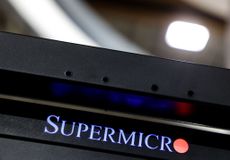Advice for First-Time Buyers
Get your foot in the front door with the right mortgage and cash for a downpayment and closing costs.
Anh Nguyen always dreamed of having a walk-in closet. So the first thing she did after buying her Arlington, Va., duplex a year ago was make that dream a reality: Racks and shelves of clothes and shoes now line the walls of what was once a tiny bedroom. Creating her dream closet led to polishing up a finished basement to create a real third bedroom. Nguyen needed the extra space for two roommates, her best friends, who would be moving in to help cover the costs of ownership.
| Row 0 - Cell 0 | Homebuyer's Guide |
| Row 1 - Cell 0 | Search for the Best Mortgage Rates |
| Row 2 - Cell 0 | Home Prices Where You Live |
The 25-year-old IT consultant qualified for her $320,000 mortgage on her own, but having roommates keeps her firmly in the comfort zone. At a 5.3% interest rate, her monthly mortgage payment is $2,000, and she covers more than half of that with rent money from her roommates. The three share the cost of utilities, making Nguyen's budget even more manageable. "I really lucked out," she says. "Aside from my roommates' financial support, they make the house feel like a home."
The new deal
Home prices have appreciated nearly 50% nationwide over the past five years, but that hasn't stopped younger people from breaking into the market. Four in ten buyers are purchasing for the first time, and the median age of these first-time homeowners is 32. Thanks in part to an explosion of zero-down-payment loan products, the number of first-time buyers younger than 25 jumped from about 11% earlier in the decade to 14% last year, accounting for almost 6% of all home sales. In 2005, 43% of first-time buyers purchased with no money down, according to the National Association of Realtors.

Sign up for Kiplinger’s Free E-Newsletters
Profit and prosper with the best of expert advice on investing, taxes, retirement, personal finance and more - straight to your e-mail.
Profit and prosper with the best of expert advice - straight to your e-mail.
Buying your first home isn't what it used to be -- namely, a process with specialized mortgage deals designed to meet the needs of first-timers, such as Veterans Affairs, Federal Housing Administration and other loans for new homeowners. "There are so many options out there that these programs aren't as beneficial," says Jim McMillan, a senior loan officer with JP Mortgage/JPMorgan Chase.
The no-money-down VA loan is all but dead. The FHA loan, however, is a good vehicle if you have less-than-stellar credit. For more information about loans in your area, find a housing counselor at www.hud.gov.
Finding the cash cow
Even if you don't need money for a down payment, you'll still need cash for closing costs -- figure on 2% to 3% of the purchase price. You'll also need cash for the earnest-money deposit to show the sellers you're serious about your offer. The deposit, typically 10% of the offering price, is applied to the purchase.
One source of cash may be your Roth IRA, from which you can withdraw the amount of your contributions at any time. In addition, after the account has been open for five years you can withdraw $10,000 in earnings -- tax- and penalty-free -- to use toward the purchase of a first home. You can also take as much as $10,000 out of your traditional IRA penalty-free for the purchase of your first house or to cover closing costs. But in that case you'll have to pay taxes on the money. Another option is to ask the seller to pay your closing costs and roll that amount into the cost of the home.
If you can tap generous family members or friends, you might be able to score a gift to help cover costs. Lenders usually ask for a letter stating where the funds came from and confirming that the money is not a loan, says Ilyce Glink, author of 10 Steps to Home Ownership (Three Rivers Press, $15).
Brian Roy of Allentown, Pa., owes his homeownership to a gift, of sorts. He was 30, just out of medical school, and saddled with more than $200,000 in student-loan and credit-card debt. Feeling that he "needed to get started in life," Brian began checking out his options for buying a home. Because he had so much debt and no down-payment money, he was offered a rate of 6.5% on a first mortgage, plus a second mortgage with a variable rate of 6.9% that could go as high as 22%. That's when the Bank of Roy stepped in.
Brian's father, Dennis, offered him a 30-year fixed-rate loan at 6.5%. Brian snapped it up and was able to buy a property with two units -- one to live in and one to rent. The owners were asking $157,000 but eventually came down to $130,000.
The Roys structured their family loan through CircleLending, an Internet loan-administration company that specializes in private loans. For an up-front fee ($200 to $600, depending on the amount and terms of your loan), CircleLending does all the paperwork to set your loan in motion. Large loans and those paid back over more than one year generally carry an annual service charge of about $100.
Brian's credit will benefit as his payments are reported to a credit agency -- and best of all, the money stays in the family. "The most important thing was fulfilling Brian's dreams," says Dennis. "Of course, I'm also ensuring a great return for myself." He rests assured that once Dr. Roy is practicing, he'll be there for dear old Dad, too.
MORTGAGES 101
Buying by the numbers
Lenders look at three things when you apply for a mortgage: credit score, debt-to-income ratio and down payment. "If you've got two of the three elements working for you, you're in good shape to buy," says Jim McMillan, a senior loan officer with JP Mortgage/JPMorgan Chase.
All lenders are credit-score-driven these days. FICO scores, the most commonly used, range from 300 to 850, but the number to shoot for is about 750, says McMillan. The higher your score, the more flexible lenders will be. But even with a score of 700, he says, you'll still be considered an A borrower and qualify for the best rates.
Another big consideration is your debt-to-income ratio. Traditionally, lenders have followed the 28/36 rule: No more than 28% of your monthly gross income should be dedicated to your mortgage payment, property taxes and insurance, with total debt equaling no more than 36% of your gross income. But if you have no other debt, you can dedicate 36% of your income to home payments. With an FHA-backed loan, you may be permitted to apply as much as 41% of your income to total debt.
Coming up with the down payment is a struggle for many buyers, but it can make a big difference, especially if you don't have stellar credit. The more money you put down, the less risk the lender takes on. A 20% down payment is the threshold at which you're exempt from private mortgage insurance, which can add a few hundred non-tax-deductible dollars to your monthly payment.
-
 Why United Airlines Stock Is Flying Higher After Earnings
Why United Airlines Stock Is Flying Higher After EarningsUnited Airlines beat expectations for the first quarter and its stock is by soaring. Here's what you need to know.
By Joey Solitro Published
-
 Super Micro Computer: Why This Hot Stock Could Hit $1,500
Super Micro Computer: Why This Hot Stock Could Hit $1,500Super Micro Computer's long-term AI revenue potential is underappreciated, Loop Capital says. Here's what you need to know.
By Joey Solitro Published
-
 Best Foreclosure Sites for Finding Properties
Best Foreclosure Sites for Finding PropertiesMaking Your Money Last Wondering how to find foreclosed homes for sale for your next residence or to flip for a profit? These websites will guide you to foreclosures and real estate-owned properties to buy.
By Bob Niedt Last updated
-
 Luxury Home Prices Rise as the Rich Dodge High Mortgage Rates
Luxury Home Prices Rise as the Rich Dodge High Mortgage RatesLuxury home prices rose 9% to the highest third-quarter level on record, Redfin reports, growing nearly three times faster than non-luxury prices.
By Kathryn Pomroy Published
-
 Four Tips for Renting Out Your Home on Airbnb
Four Tips for Renting Out Your Home on Airbnbreal estate Here's what you should know before listing your home on Airbnb.
By Miriam Cross Published
-
 5 Ways to Shop for a Low Mortgage Rate
5 Ways to Shop for a Low Mortgage RateBecoming a Homeowner Rates are high this year, but you can still find an affordable loan.
By Daniel Bortz Published
-
 Looking to Relocate? Plan for Climate Change
Looking to Relocate? Plan for Climate Changebuying a home Extreme weather events are on the rise. If you’re moving, make sure your new home is protected from climate change disasters.
By Rivan V. Stinson Published
-
 Retirees, A Healthy Condo Has a Flush Reserve Fund
Retirees, A Healthy Condo Has a Flush Reserve FundSmart Buying Reserve funds for a third of homeowner and condo associations have insufficient cash, experts say. Here are some cautionary steps you should take.
By Patricia Mertz Esswein Published
-
 Cash Home Buyers: New Services Offer Help Making All-Cash Offers
Cash Home Buyers: New Services Offer Help Making All-Cash OffersBecoming a Homeowner Some firms help home buyers make all-cash offers on homes. Weigh the fees before you sign on.
By Emma Patch Published
-
 Home Sale Prices in the 50 Largest Metro Areas
Home Sale Prices in the 50 Largest Metro AreasBecoming a Homeowner What’s happening in the market where you live?
By the editors of Kiplinger's Personal Finance Published